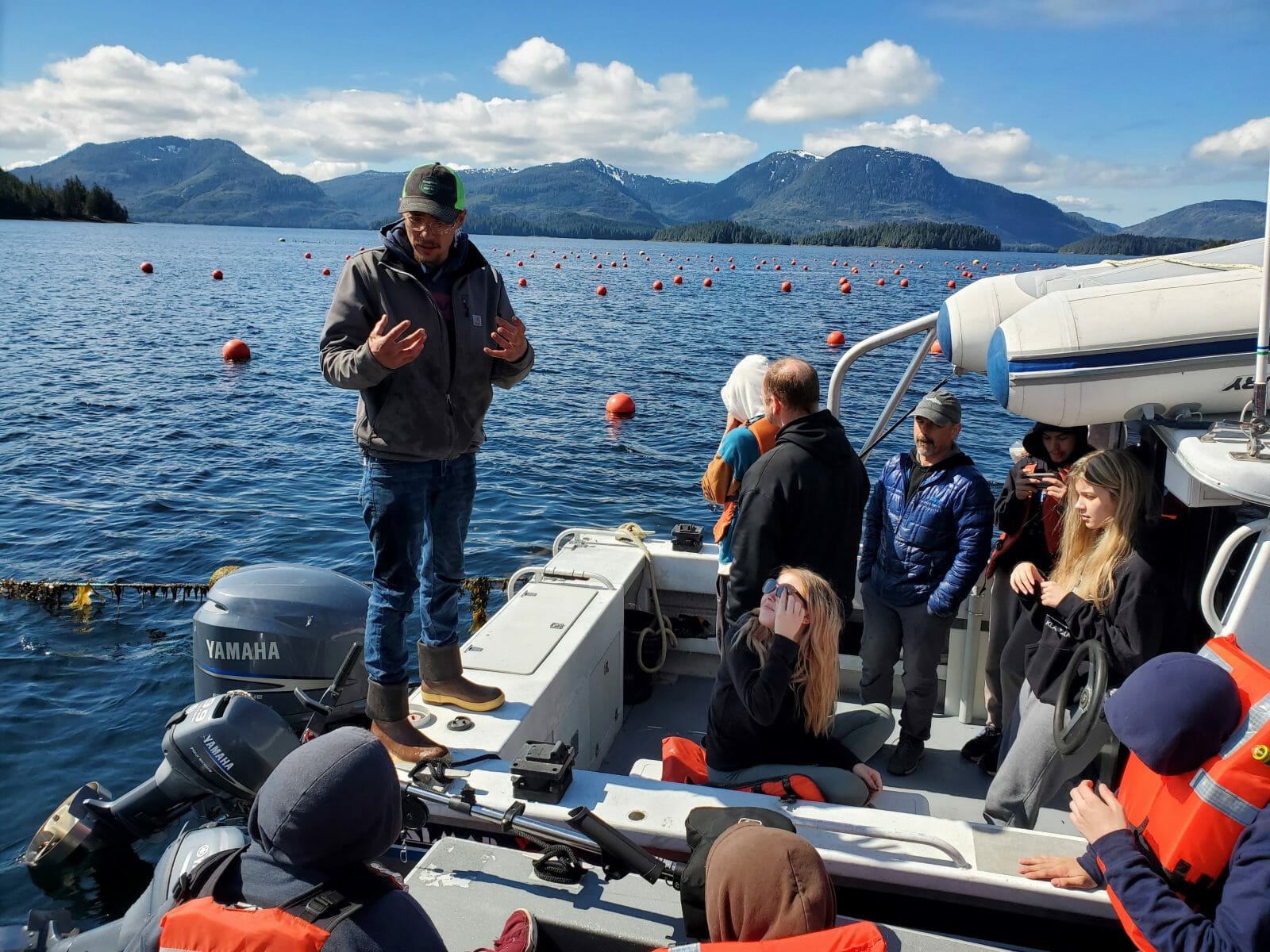
As a part of the Sealaska Shareholder Development department’s newly expanded curriculum in mariculture, Klawock students recently ventured out to Seagrove Kelp at Port St. Nicholas on Prince of Wales Island (POW). The visit offered students a chance to learn more about the mariculture business and the growing possibilities — and growing workforce needs — of the mariculture industry.
Sealaska believes starting with youth and guiding them on their unique educational journeys while exposing them to potential career pathways is the first step in our overall shareholder development mission of creating opportunities, programs and partnerships for the benefit of shareholders at each step of their life path and in diverse fields.
Mariculture, or marine farming, is a relatively new industry to Alaska, but one which is expanding rapidly. As part of the trip, students were able to explore and learn about many of the different jobs that it takes to keep a mariculture operation like Seagrove going.
“Giving students something focused, to get exposure to things that could be valuable to them on their own. Sometimes, you just have to see it for yourselves,” said Sealaska Rural Community Liaison Bob Girt. “When the kids can get hands on, and use that as an opportunity to learn more about something new, boom. You could have someone on a path now with something they didn’t even know could be a job before.”
Students were able to see and participate in each step of the process, learning and asking questions about processes from sea, where the kelp groves are cultivated and await harvest, to processing, where they were able to learn the best ways to “filet” a stalk of kelp, all the way to packaging and shipment.
The visit to Seagrove showcases possibilities for POW students just beginning to consider life after high school, helping bridge connections with opportunities in unexpected places. They may already have skills aligned with the work at hand, said Girt, and just not realize it. For example, a background in commercial or subsistence fishing could provide helpful background for a mariculture career.
“This helps them see what work opportunities could be —running a skiff, setting buoys, there’s all kinds of opportunities there,” said Girt. The relationships built through trips like this one to Seagrove help students realize what’s out there, he continued.
“What can they learn, what can they do, is there things there that they can learn from a trip like this,” Girt said. “So one of the things they heard, especially for the students who were close to graduation, is that you can come to work here right out of high school. You can be taught the skills you need to have on the job. They may not have heard that otherwise.”
Sealaska’s Shareholder Development department helps provide curriculum and support to school districts across Prince of Wales Island and recently added mariculture as a curriculum focus. Sealaska proudly invests in community- and skill-building programming to support excursions like this one, providing hands-on learning opportunities for youth with a goal of increasing the number of shareholders on the path to higher education and employment in natural resource stewardship.